English Electric Canberra - Survivor WK163 (ex G-BVWC)
B.2 WK163 - Vulcan to the Sky Trust (stored), former Robin Hood Airport, South Yorkshire
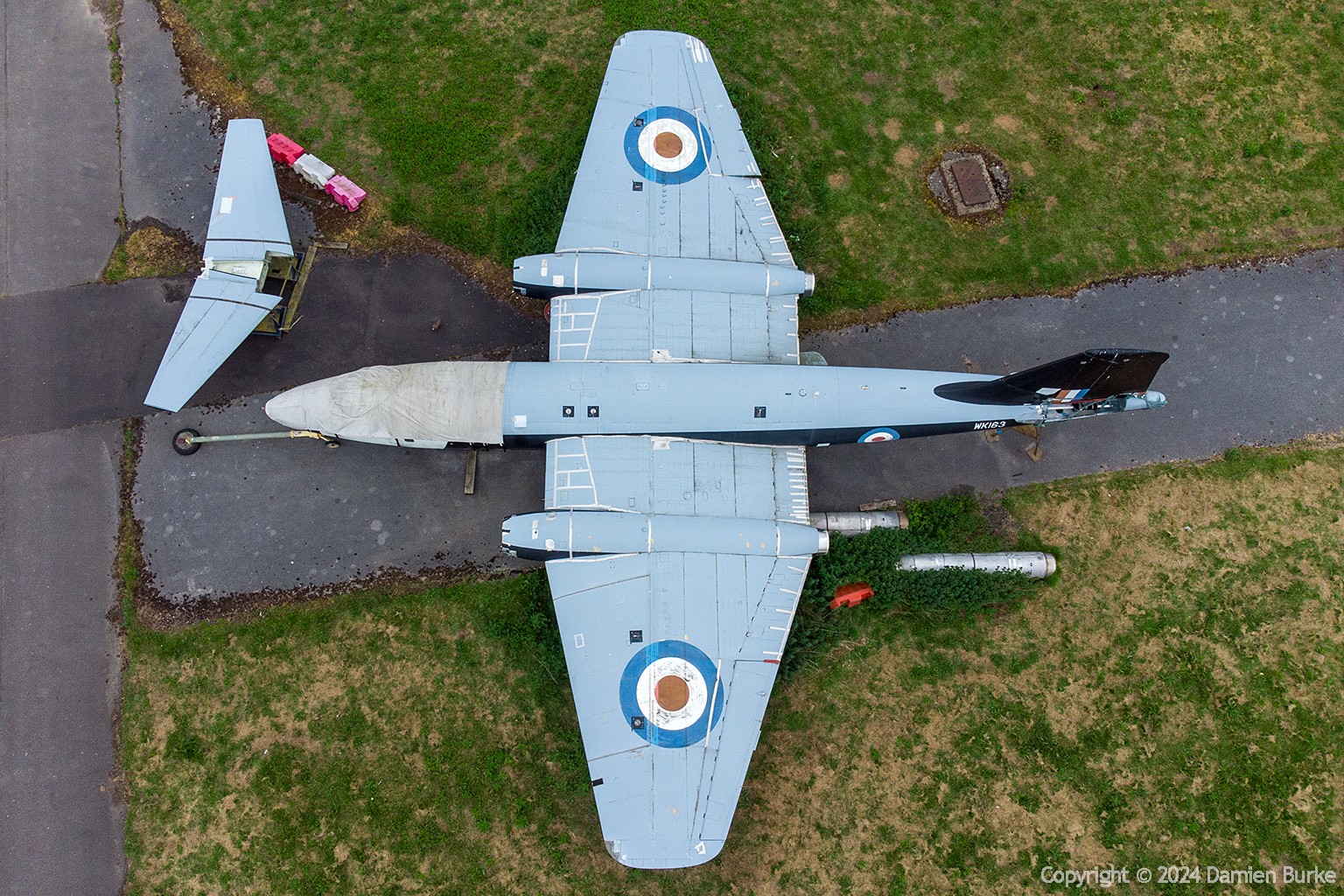 |
Canberra B.2 WK163 at Former Robin Hood Airport, 20th May 2024; Damien Burke
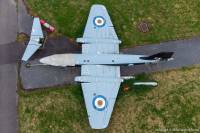
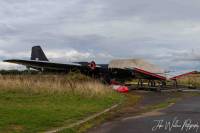
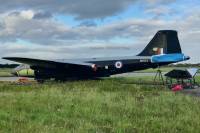
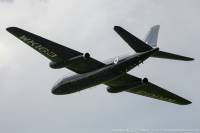
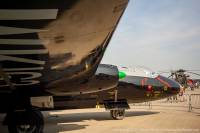
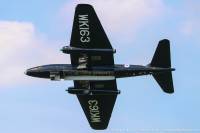
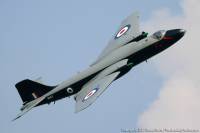
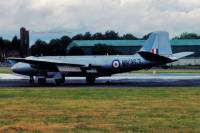
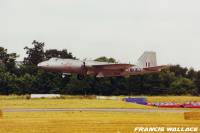
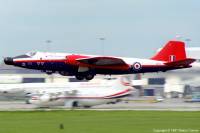
Looking rather abandoned at the former Robin Hood Airport is record breaker B.2 WK163. Delivered to the RAF in 1955, this B.2 went almost immediately to Armstrong-Siddeley at Bitteswell for installation of Sapphire Sa 7s and then on to Napier's works at Luton Airport. At Napiers, the Double Scorpion rocket motor was fitted into the rear of the bomb-bay. This rocket motor was being developed as a power-booster for the English Electric Co's P.1 (the prototype Lightning).
In August 1957, with the aid of this rocket, WK163 captured the world altitude record, achieving a height of 70,310 feet! After this event, the airframe had a red scorpion painted on the nose with details of the altitude record. A fairly varied career followed in research flying with her transfer to Bristol-Siddeley at Filton where she was used for testing the short and long life Viper. In 1959, WK163 was again transferred, this time to the Radar Research Establishment for infra-red linescan development as part of the TSR2 programme.
Then WK163 really "came apart". At Pershore in 1968, B.6 wings and engines were fitted. In 1969, the original nose was fitted to WT327 and WK163 received the nose from B.6 XH568. WK163 was the first Radar Research Flying Unit Canberra to be handed over to the Royal Aircraft Establishment Bedford in 1976.
After retirement in the 1990s, WK163 was acquired by Classic Aircraft Projects who restored her to her Scorpion markings and successfully operated her on the airshow circuit, based in very austere conditions at Bruntingthorpe. They later moved her to Coventry Airport to lodge with Air Atlantique's Classic Flight.
CAP carried out a major refurbishment program during 2002, returning her to the air in May 2003. Gone was the "Scorpion" identity as WK163 took to the air in the classic grey/black "Bomber Command 1" colours as used for Canberras on their entry into RAF service in 1951. The red lightning flash on the nose is representative of 617 Squadron. WK163 was a highly popular airshow performer and was usually flown by David Piper.
Sadly, WK163 suffered an engine failure whilst taxiing out to take off in 2007, which has grounded her ever since. Volunteers undertook a huge worldwide search to try and find another engine with the correct paperwork to allow the airframe to take the skies once again. In the meantime, the aircraft was initially stored, but then an in-depth restoration was begun with the airframe being comprehensively stripped out. Sadly this came to a halt and with Classic Flight first departing Coventry and then being wound up, the now abandoned airframe came up for disposal, with many of the removed parts having vanished.
In 2016, WK163 was - to much surprise - sold to the Vulcan to the Sky Trust (VTST) and moved to Robin Hood airport in Doncaster, joining Vulcan XH558. The Trust was enthusiastic about returning the airframe to the skies once again, but more than 7 years later there has been no progress. She has basically sat, still partially dismantled, in open storage, ever since. In November 2020, VTST acquired WT327 (which still had WK163's original nose section) with the aim of reuniting the nose with the airframe and thus shortcutting a huge amount of restoration work that would be needed with WK163's existing stripped-out nose.
In 2022, VTST began to raise funds for a hangar where they could display both XH558 and WK163 side by side, allowing them to share the airframe's histories and journeys with the public for years to come. Unfortunately, the trust was unsuccessful in raising the funds, and to add to the wound, Robin Hood Airport was closed later that year, leaving the aircraft and VTST with an uncertain future.
During these uncertain times, XH558 has become the group's main priority, leaving WK163 untouched and abandoned next to one of the crash gates. If VTST is able to continue operating at Robin Hood for the foreseeable, then it is hoped that the volunteers will get to WK163 at some point. By May 2024, with the news that the City of Doncaster Council had leased the site with the aim of re-opening the airport, and a positive attitude towards VTST remaining on the site, we may yet see some progress with this record-breaking airframe. Fingers crossed!
In August 1957, with the aid of this rocket, WK163 captured the world altitude record, achieving a height of 70,310 feet! After this event, the airframe had a red scorpion painted on the nose with details of the altitude record. A fairly varied career followed in research flying with her transfer to Bristol-Siddeley at Filton where she was used for testing the short and long life Viper. In 1959, WK163 was again transferred, this time to the Radar Research Establishment for infra-red linescan development as part of the TSR2 programme.
Then WK163 really "came apart". At Pershore in 1968, B.6 wings and engines were fitted. In 1969, the original nose was fitted to WT327 and WK163 received the nose from B.6 XH568. WK163 was the first Radar Research Flying Unit Canberra to be handed over to the Royal Aircraft Establishment Bedford in 1976.
After retirement in the 1990s, WK163 was acquired by Classic Aircraft Projects who restored her to her Scorpion markings and successfully operated her on the airshow circuit, based in very austere conditions at Bruntingthorpe. They later moved her to Coventry Airport to lodge with Air Atlantique's Classic Flight.
CAP carried out a major refurbishment program during 2002, returning her to the air in May 2003. Gone was the "Scorpion" identity as WK163 took to the air in the classic grey/black "Bomber Command 1" colours as used for Canberras on their entry into RAF service in 1951. The red lightning flash on the nose is representative of 617 Squadron. WK163 was a highly popular airshow performer and was usually flown by David Piper.
Sadly, WK163 suffered an engine failure whilst taxiing out to take off in 2007, which has grounded her ever since. Volunteers undertook a huge worldwide search to try and find another engine with the correct paperwork to allow the airframe to take the skies once again. In the meantime, the aircraft was initially stored, but then an in-depth restoration was begun with the airframe being comprehensively stripped out. Sadly this came to a halt and with Classic Flight first departing Coventry and then being wound up, the now abandoned airframe came up for disposal, with many of the removed parts having vanished.
In 2016, WK163 was - to much surprise - sold to the Vulcan to the Sky Trust (VTST) and moved to Robin Hood airport in Doncaster, joining Vulcan XH558. The Trust was enthusiastic about returning the airframe to the skies once again, but more than 7 years later there has been no progress. She has basically sat, still partially dismantled, in open storage, ever since. In November 2020, VTST acquired WT327 (which still had WK163's original nose section) with the aim of reuniting the nose with the airframe and thus shortcutting a huge amount of restoration work that would be needed with WK163's existing stripped-out nose.
In 2022, VTST began to raise funds for a hangar where they could display both XH558 and WK163 side by side, allowing them to share the airframe's histories and journeys with the public for years to come. Unfortunately, the trust was unsuccessful in raising the funds, and to add to the wound, Robin Hood Airport was closed later that year, leaving the aircraft and VTST with an uncertain future.
During these uncertain times, XH558 has become the group's main priority, leaving WK163 untouched and abandoned next to one of the crash gates. If VTST is able to continue operating at Robin Hood for the foreseeable, then it is hoped that the volunteers will get to WK163 at some point. By May 2024, with the news that the City of Doncaster Council had leased the site with the aim of re-opening the airport, and a positive attitude towards VTST remaining on the site, we may yet see some progress with this record-breaking airframe. Fingers crossed!
Information on this page current as of 21/05/2024, last updated by Damien |
Find other photos of WK163 on the following sites:
Air-Britain - Airliners.net - Airplane-Pictures.net - flickr.com - WorldAirPics.com - JetPhotos.net - PlanePictures.net
